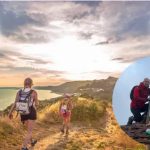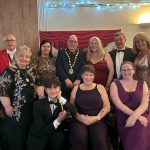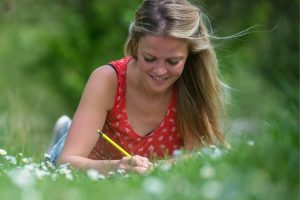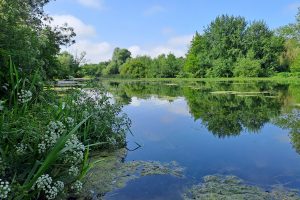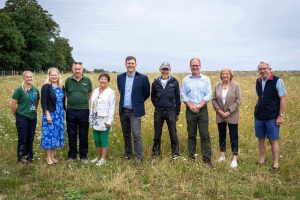Written by Graeme Davis (Andover Radio Environmental Correspondent)
Andover is incredibly fortunate to have, nestled in between the A303 and Watermills Park, a delightful nature reserve known as Rooksbury Mill. The site south of the town started life as part of the Rooksbury Mill Estate. In 1966 the plan was to open the site for gravel extraction to provide material for the then under-construction A303. However, planning was declined, and the pits eventually opened smaller than planned in 1969, after the A303 was completed. The lakes were then filled and it became a fishery, until it was sold to Test Valley Borough Council (TVBC) and turned into the reserve we know today.
The site contains two lakes which are valuable for fishing and wildlife alike, one solely left for the benefit of wildlife. The River Anton also runs through the reserve, as well as the remnants of small ponds which were part of the fishery, creating a nice mosaic of wetlands. The mill, originally part of the site, is now a private residence, and was one of several mills that were present in Andover which included Anton Mill, and The Town Mills (now a pub).
Rooksbury Mill is well known for its mammals, dragonflies and birds. In the winter it is especially good for overwintering wetland birds like water rail, teal, gadwall and tufted ducks, who come here to seek food and shelter from the colder climates of Europe. Cormorants, little egrets and grey herons are regular features of the waterside waiting for unsuspecting fish.
The reserve is a stronghold for the nationally declining water vole, also known as ‘Ratty’ from Wind in the Willows. You can often hear a plop in the water as a vole jumps off the bank into the water as you pass. These are carefully monitored to make sure they are not gobbled up by the introduced, invasive mink released from fur farms in the 1960s. Otters are also present at the site and can be seen along the full length of the watercourse, extending to the other side of town at Anton Lakes.

Dragonflies and damselflies are well represented at the lakes. Dragonflies are represented by about 8 or 9 species, which include golden-ringed, our longest dragonfly, migrant & southern hawker, brown hawker – one of Britain’s biggest dragonflies, and broad-bodied chasers. As autumn is approaching, you will often see Brown Hawker perched high up on the trees and bright red common darters sunning themselves on the footpaths. Damselflies are represented by azure, common blue, large red, blue-tailed and red-eyed damselflies which often hide out in the middle of the lakes on floating mats of algae, their preferred habitat.
A few butterflies can be seen frequenting the reserve. In the spring months, the wonderful orange-tip, so-called due to its orange tipped white wings, can be seen regularly. Throughout the year, peacocks, commas, and small tortoiseshell butterflies flutter amongst the buddleia and nettles, often joined by the odd locking scorpion fly. The site is also a good place for the nationally scarce wasp mimic, the red-tipped Clearwing moth, which feeds on willows and flies during the day.
Rooksbury Mill at night has even more enigmatic visitors. The site is rich with pollinators of the night, moths, and includes large moths like poplar and lime hawk-moths. The aquatic habitats also provide breeding grounds for water veneer and old lady moths. These along with mosquitos and midges provide food for a range of bats including the daubenton’s (also known as the river bat), pipistrelles and brown long-eared bats. During the hot summer months you may see a glow in amongst the long grass. This haunting glow is from the female glow worms attempting to attract a passing male. Glow worms are becoming increasingly rare and are actually beetles, not worms as the name may suggest. The Rooksbury Mill population is all that is left from a bigger colony which straddled the land the A303 now traverses.
Deep within the waters and often easier seen at night are newts. The site is one of just a few that has both smooth and palmate newts in abundance. palmate newts prefer acidic waters, which the ditches and small ponds provide. Common frogs and toads are also abundant though they run a gauntlet of survival with the water fowl, otters and large fish like pike.
The more colourful members of the lakes are its population of wasp spiders, which live amongst the long grass making webs which contain a white zig zag. To this day, the purpose of this unusual pattern on the webs is unknown.
The site has provided a wetland oasis in the increasingly urban Andover. A stunning to to relax and be at calm with wildlife. TVBC and The Anton River Conservation Association (TARCA) work together to make sure that this site thrives and is a refugee for Andover’s wildlife now and for the future.






